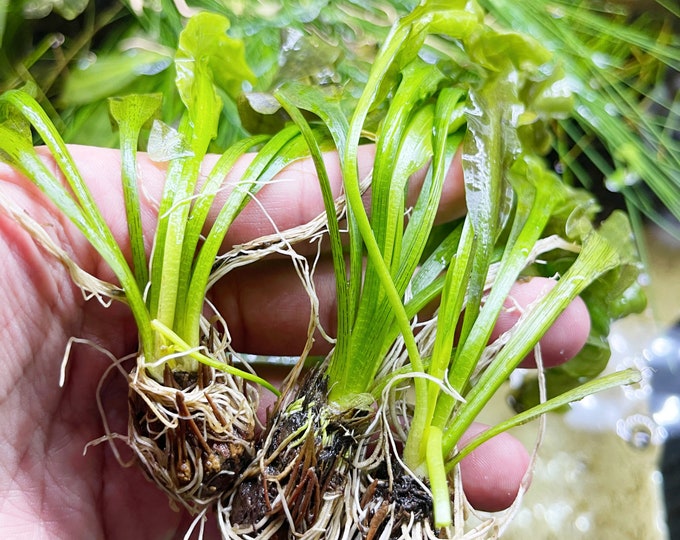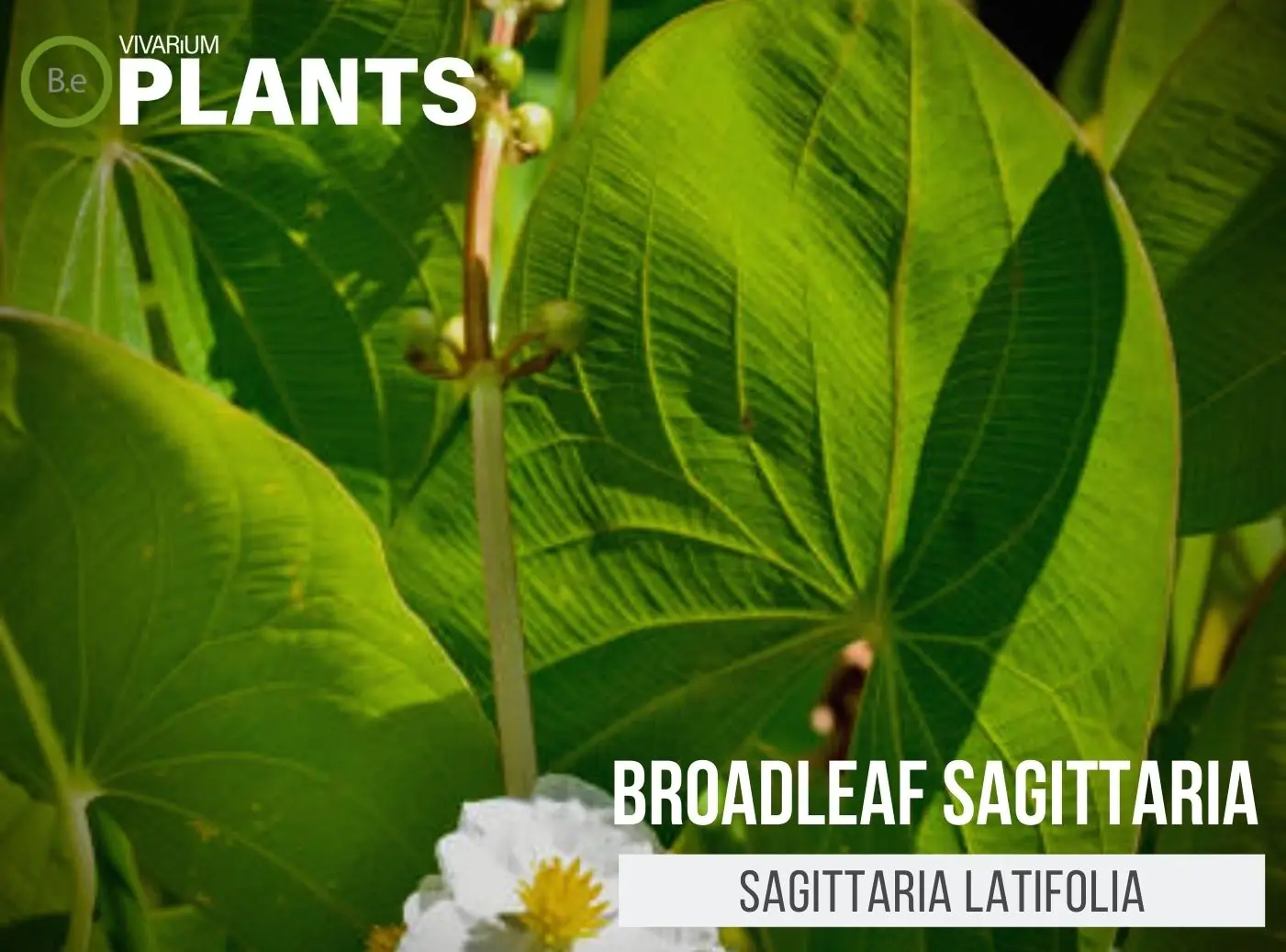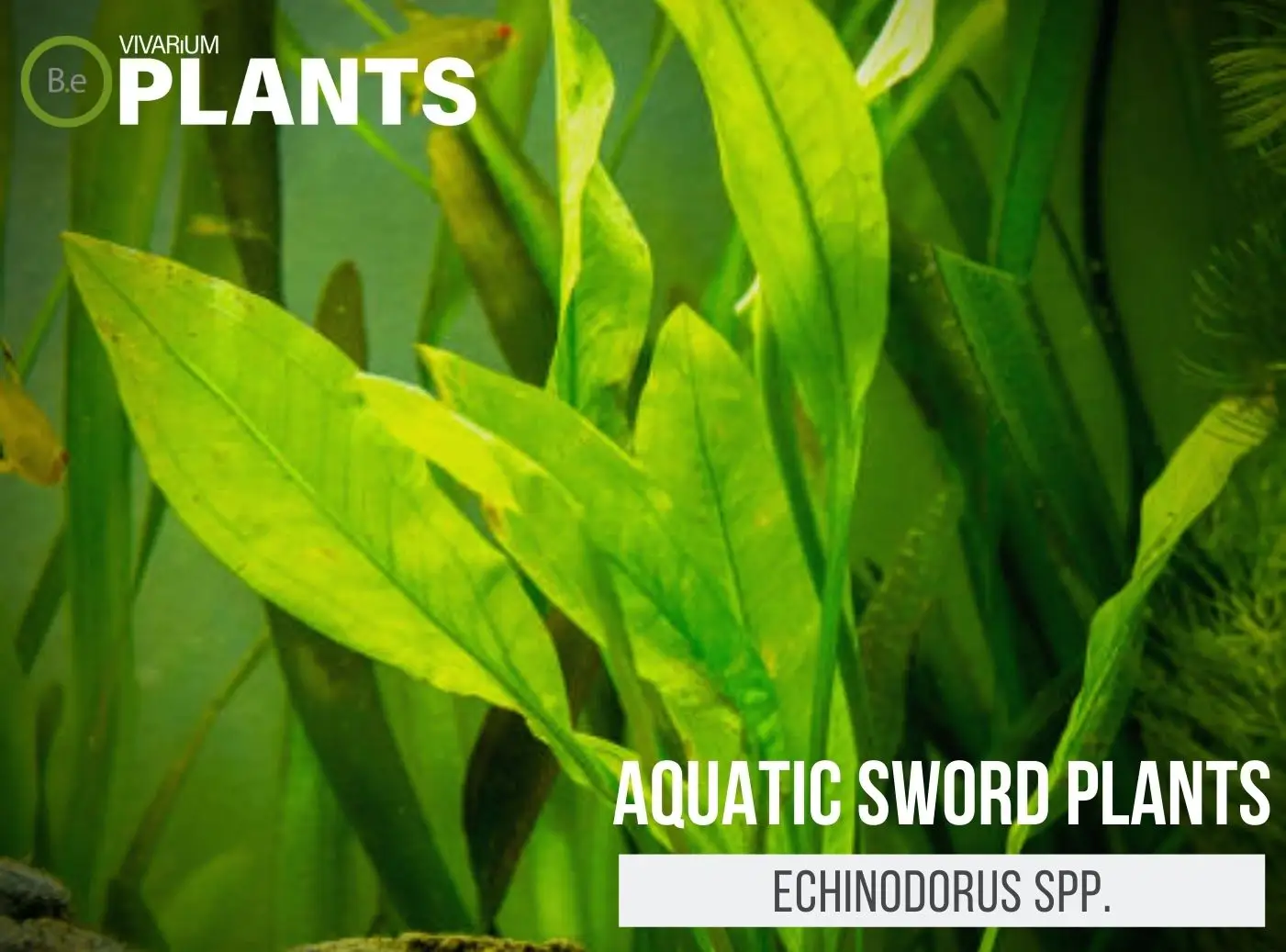Aponogeton ulvaceus, also known as Aponogeton Bulbs is the perfect marginal plant to have in an aquatic vivarium with or without animals.
As one of the few plants able to survive underwater, this aquatic species makes a great addition to any paludarium, riparium, or aquarium.
This vibrant bulb–like plant is a preferable choice to intermediate and advanced hobbyists alike since it can be quite finicky to care for.
Table Of Contents:
ToggleWhat Is An Aponogeton Bulb?
Aponogeton ulvaceus, commonly known as Aponogeton Bulbs, is an aquatic species and species of flowering aquatic plant of the Aponogetonaceae family.
Aponogeton Bulbs are native throughout sub–Saharan Africa and are found commonly in ponds and lakes.
This plant is found growing in large clumps and is characterized by its bulb–like shape and leaves that extend from its bulb.


Aponogeton Bulb Facts
Besides its aesthetic value, Aponogeton Bulbs can also be a great oxygen sponge, which makes them great for smaller aquariums and tanks.
This plant can provide cover for smaller animals like fry and shrimp and can also act as a host for various beneficial organisms.
Description
The Aponogeton ulvaceus is known for its large bulb that can reach up to 3 to 4 inches in diameter, covered in a papery outer layer.
The leaves grow from the bulb and can reach up to 15 to 20 inches long and are long and straight. The color of this plant varies from dark green to purplish green.
Habitat
Aponogeton ulvaceus is native throughout sub–Saharan Africa.
Although they are mainly found in shallow waterways, they are also found in slow–moving streams and deep pools.
The ideal temperature of this plant’s natural habitat ranges between 68° F and 82° F, although it can withstand much colder temperatures for short periods of time.
pH Preference
Aponogeton ulvaceus prefers a slightly acidic environment with a pH range of 5.5 to 7.5. This is a wide range, so as long as your water is within these parameters, your Aponogeton Bulbs should thrive.
Vivarium Type
The Aponogeton Bulb is quite an easy-going species. With that in mind, it will not be too complicated when it comes to choosing the type of enclosure it is grown in. It is best to try and replicate the plant’s natural habitat as much as possible.
Doing so will make it easier to provide this foliage plant with its basic needs. The proper setup and theme of the enclosure will make a big difference to the overall look and health of the plant. Be sure to choose setups that are moist and high in humidity.
Here are recommended vivariums it will do well in:
- Paludariums – Half aquatic/ half terrain-based enclosure.
- Ripariums – Mostly aquatic-based enclosures with some terrain features present.
- Aquarium– Fully aquatic-based enclosure with little to no dry terrain.
Vivarium Placement
This plant is best suited for aquatic setups under the water. Aponogeton Bulbs should be planted close to the back of the tank on the substrate to provide cover for smaller inhabitants like fry and shrimp.
If the tank is too shallow, the plant might not survive, so make sure it is at least 6 to 8 inches deep. If necessary, provide a Weight on top of the bulb to ensure it stays in place.
Substrate
Aponogeton Bulbs need to be planted in a nutrient–rich aquatic substrate such as clay pellets, peat moss, or coco coir.
This will provide the plant with the nutrients it needs to grow properly.
The substrate should also be fairly soft with good porosity as this will allow for water to penetrate quickly and allow for proper root development.
Lighting
Aponogeton ulvaceus require moderate aquatic lighting to grow. Aim for a spectrum that mimics the direct sun, like LEDs, and place them on the sides of the tank.
This will ensure the water remains clear and that the plant won’t be overgrown by algae. Avoid strong, direct sunlight, as this could damage or kill the plant.
Buy Aponogeton Bulb
When it comes to buying Aponogeton ulvaceus, there are a few things to keep in mind. Making sure the plant is healthy when purchased is essential for its success in a vivarium or pond. Vegetation that is already in poor conditions will have a very hard time adjusting to new environments.
Click the image below to find out more about the current price and other relative info about this plant.
Aponogeton Bulb Care & Propagation
Aponogeton Bulbs are relatively easy to care for once established. Propagation can be done by dividing the bulbs into smaller pieces.
Each piece should have at least four leaves and roots to ensure successful growth. Once the pieces are separated, plant them directly on the substrate and cover them lightly with soil.
How To Grow
For best results, Aponogeton Bulbs should be grown in an ideal environment with consistent temperature and water parameters.
As mentioned earlier, the bulbs prefer warmer temperatures, around 77° to 82° F, and a pH of around 6.
The main factor for healthy growth is consistency in light and water. Make sure that the bulbs are not exposed to direct sunlight and that the water is not too stagnant.
Water Requirements
Aponogeton Bulbs need to be kept in a consistent depth of water. The bulb as well as the roots should be kept moist at the very least if planting submersed.
The water needs to be able to circulate through the bulb to provide nutrients and oxygen.
Plants Similar To Aponogeton Bulb
Adding diversity to an enclosure is key to an aesthetically pleasing setup. Try mixing up the look of your vivarium with different flora that can easily co-exist in the same types of environment.
Furthermore, if for some reason you find the Aponogeton Bulb hard to acquire or would like to consider something similar to this aquarium plant… Here are other marginal plants you might find will do well with or in place of Aponogeton ulvaceus:
Conclusion
Aponogeton ulvaceus is an amazing aquatic plant that can be used as a decoration or as a host for beneficial organisms in an aquarium, paludarium, or riparium.
Although this plant can be a bit finicky to care for, it is worth the effort as it is sure to bring life and color to any setup!
Frequently Asked Questions
No, Aponogeton plants do not need carbon dioxide (CO2) to complete the photosynthesis process. These plants are able to survive and grow in an aquarium without the addition of CO2.
The benefits of Aponogeton include:
– Provides hiding places for fish and other aquatic creatures
– Tolerates a wide range of water temperatures
– Controls algae and purifies the water
– Provides stunning backdrops to any aquarium or pond
– Does not require a major filtration system
– Easy to maintain and propagate
– Can survive long periods without sunlight or nutrients
Yes, Aponogeton needs a substrate to anchor its roots and provide nutrients to the plant. The substrate should be made from fine sand, gravel, or clay. Specific varieties of Aponogeton may require more specific substrates such as clay or peat moss.
Aponogeton plants typically grow to a maximum size of 20 inches in height and 0.5–1.5 feet in width.
To trim Aponogeton, use a pair of sharp scissors or scissors–like trimming tools to cut off dead or overgrown foliage at the base of the plant. Carefully and slowly remove the overhanging leaves by snipping them off. Make sure not to remove too much of the foliage or stems. Discard the removed material promptly and rinse your hands after trimming.
Yes, Aponogeton is a plant genus that can be propagated by dividing rhizomes, tuber, or offshoots. Its seeds can also be used for propagation.
It takes between 5 and 8 weeks for Aponogeton plants to grow.
1. Prepare the aquarium by filling it with water, then cycling the water and adding any beneficial bacteria.
2. Select a pot and fill it with gravel or aquatic soil to create a bed for the bulb.
3. Place the Aponogeton bulb with its pointed end facing up and bury it in the gravel or soil.
4. Top the pot with 3 or 4 inches of gravel to help keep the bulb in place.
5. Place the pot in the aquarium, making sure it is completely submerged.
6. Allow the bulb to root and leaf out fully.
7. Add more fertilizer or fertilized water to ensure the Aponogeton bulb is properly fertilized and continue to monitor water parameters.






